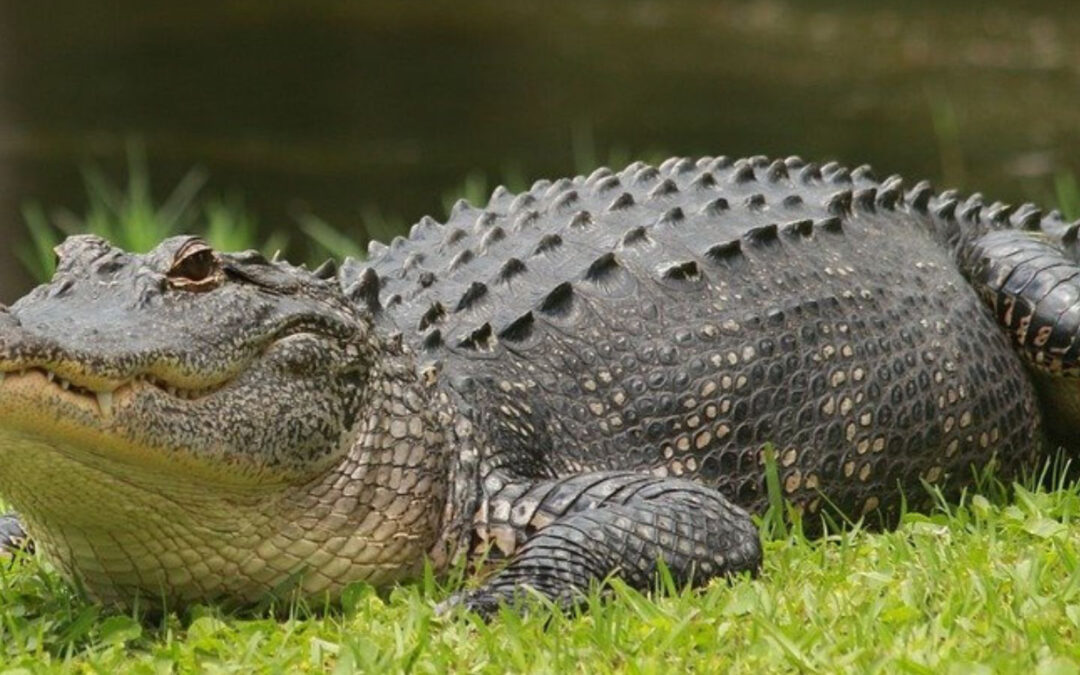Fun Facts About Alligators: Alligators are among the closest living relatives to ancient dinosaurs, offering us a fascinating look into a world from millions of years ago. These reptiles have been on Earth for over 200 million years, with ancestors dating back to the Cretaceous period. Their prehistoric features and unique behaviors continue to captivate us today.
A Brief History of Alligators
The name “alligator” comes from the Spanish word for “lizard.” Alligators belong to the crocodilian family, which also includes gharials, caimans, and crocodiles. There are two species of alligators: the American alligator and the Chinese alligator. Habitat and Distribution Alligators are primarily found in freshwater environments such as swamps, marshes, lakes, and rivers. The American alligator is native to the southeastern United States and parts of Mexico, while the Chinese alligator is found in specific regions of China.
Lifespan, Size, and Weight :The American alligator can grow up to 15 feet long and weigh up to 1,000 pounds. In contrast, the Chinese alligator is often smaller, reaching about seven feet in length.
Physical Characteristics : Alligators have powerful tails, armored bodies, and a cold-blooded constitution. Their dorsal surfaces are covered in bony plates called osteoderms. American alligators have dark grey, black, and brown coloring that helps them blend into their marshy habitats.
Behavior and Social Structure : Larger male alligators are usually solitary, while smaller ones often form social groups. They are highly territorial and will fiercely defend their space. Alligators are apex predators, feeding on fish, shellfish, birds, and small mammals. They are known for their incredibly strong bite, which they use to kill and consume their prey.
Conservation Status : Alligator conservation status varies by species. American alligators are classified as “least concern” due to successful conservation efforts. However, Chinese alligators are critically endangered, facing significant challenges to their survival. Supporting conservation efforts is essential to protect these ancient reptiles.
Fascinating Facts About Alligators
- A Group of Alligators is Known as a Congregation: Alligators often gather in groups called congregations. They cooperate to watch for predators and protect their young.
- Tail Regrowth: Alligators can regenerate a portion of their tail after an injury. They can regrow up to nine inches of lost tail length.
- Nest-Building Behavior: Female alligators build nests from vegetation to hide and protect their eggs. Nests can be seven to ten feet wide, with clutches containing 35 to 50 eggs (some can hold up to 90 eggs).
- Distinguishing Alligators from Crocodiles: Alligators have rounded snouts and an overbite, making their lower teeth less visible when their mouths are closed. Crocodiles have sharp, V-shaped snouts, and their teeth interlock even when their mouths are shut.
- Temperature-Dependent Sex Determination: The sex of alligator offspring depends on the temperature of the nest. Cooler nests (31°C or below) produce more females, while warmer nests (32°C or above) produce more males.
- Continuous Tooth Regeneration: Alligators can lose two to three thousand teeth in their lifetime. They regenerate each tooth up to 50 times and typically have about 80 teeth at any given time.
- Use of Sticks as Lures: Alligators have been observed using sticks and branches to lure birds looking for nest-building materials. When the bird gets close, the alligator strikes.
- The Death Roll: Alligators use the death roll to dismember prey. They grip their prey in their teeth and spin rapidly to break off bite-sized pieces, making it easier to eat.
- Record-Breaking Sizes: The largest recorded alligator was 14 feet 9 inches long and was killed in Alabama in 2014. An even larger alligator, reported to be 19 feet long, was found in Louisiana in 1890.
- Florida’s State Reptile: In 1987, the alligator was named the official state reptile of Florida, symbolizing the state’s lush wetlands and wild beauty.
- Legal Protections in Florida: Feeding wild alligators is illegal in Florida to prevent them from associating humans with food, reducing dangerous encounters.
- The Plight of the Chinese Alligator: The Chinese alligator is critically endangered, with fewer than 100 individuals remaining. Habitat destruction and food source contamination are major threats to their survival.
Despite their fearsome appearance, alligators play a vital role in their ecosystems. Their survival for millions of years in a changing world is a testament to their resilience. Understanding and protecting these creatures is crucial, especially for the critically endangered Chinese alligator.
Our Service Area: Lake Wales, Serbing, Frostproof, Dundee, Bartow, Babson Park, Haines City, Cypress Gardens, Lake Kissimmee, Avon Park, Highland Park, Davenport


